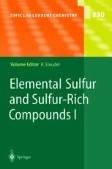Search
Search Results
-
Transcriptome analysis in abiotic stress conditions in higher plants
Drought, high salinity, and low temperature are major environmental factors that limit plant productivity. Plants respond and adapt to these stresses...
-
Signal transduction in plant cold acclimation
Temperate plants respond to low temperature by activating a cold acclimation program leading to enhanced tolerance to freezing temperatures. This...
-
Plant salt tolerance
Soil salinity adversely affects crop productivity and quality. The success of breeding programs aimed at salinity tolerant crop varieties is limited...
-
Plant responses to heat stress
The heat stress response is characterized by inhibition of normal transcription and translation, higher expression of heat shock proteins (hsps) and...
-
Sensors of abiotic stress in Synechocystis
Systematic mutagenesis of histidine kinases in combination with DNA microarray technology has allowed us to identify sensors for cold, hyperosmotic...
-
Abscisic acid signalling
Signalling of abscisic acid (ABA) in plants is characterized by an amazing number of secondary messengers that are part of the pathway or modulate...
-
On the Prebiotic Synthesis of Nucleobases, Nucleotides, Oligonucleotides, Pre-RNA and Pre-DNA Molecules
All the strategies for the prebiotic syntheses of RNA and DNA assume the adequate availability of the presumptive precursors such as purine and...
-
Chemical Signalling in Beetles
This chapter reviews chemical structures of biologically active, volatile compounds in beetles. Techniques used for structure elucidation are briefly...
-
Biologically Produced Sulfur
Sulfur compound oxidizing bacteria Sulfur compound oxidizing bacteria produce sulfur as an intermediate in the...
-
Application of Evolutionary Algorithms to Global Cluster Geometry Optimization
This contribution focuses upon the application of evolutionary algorithms to the nondeterministic polynomial hard problem of global cluster geometry...
-
Insect Chemical Defense
Research on the defensive chemistry of insects during the last decade is reviewed, with special emphasis on non-volatile compounds. The isolation and...
-
Liquid Sulfur
The molecular composition as well as the physical properties (including spectra) of liquid sulfur Liquid Sulfur...
-
Speciation and Thermodynamics of Sulfur Vapor
Sulfur vapor Sulfur vapor at temperatures of between 200 and 1000 °C consists of all molecules with 2–10 atoms, some...
-
Prediction of Crystal Structures Using Evolutionary Algorithms and Related Techniques
Methods, evolutionary and systematic search approaches, and applications of crystal structure prediction of closest-packed and framework materials...
-
Present Status of Antifouling Systems in Japan: Tributyltin Substitutes in Japan
An international conference held by the International Maritime Organization in October 2001 adopted an “International convention on the control of...
-
New Trends in Sample Preparation Methods for the Determination of Organotin Compounds in Marine Matrices
Tributyltin still remains a major issue for the marine environment and its determination is mandatory by legislation in several countries. As for...
-
Development, Occurrence and Regulationof Antifouling Paint Biocides: Historical Review and Future Trends
Antifouling agents have been used on ships since the ancient Roman and Greek civilizations. A brief history is provided through to the demise of...
-
Antifouling Paint Booster Biocides: Occurrence and Partitioning in Water and Sediments
Following the ban on the use of tributyltin (TBT) in antifouling, several organic booster biocides have been used in conjunction with copper in...
-
Worldwide Occurrence of Organotins from Antifouling Paints and Effects in the Aquatic Environment
Organotins belong to the most toxic pollutants for aquatic life known so far. Widespread contamination of harbors and areas with high ship**...
-
From the Prebiotic Synthesis of α-Amino Acids Towards a Primitive Translation Apparatus for the Synthesis of Peptides
The demonstration that ribosomal peptide synthesis is a ribozyme-catalyzed reaction does not establish that amino acids and peptides have been...
